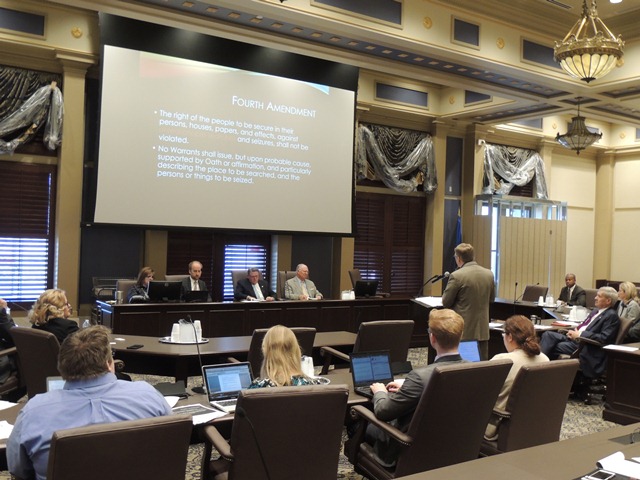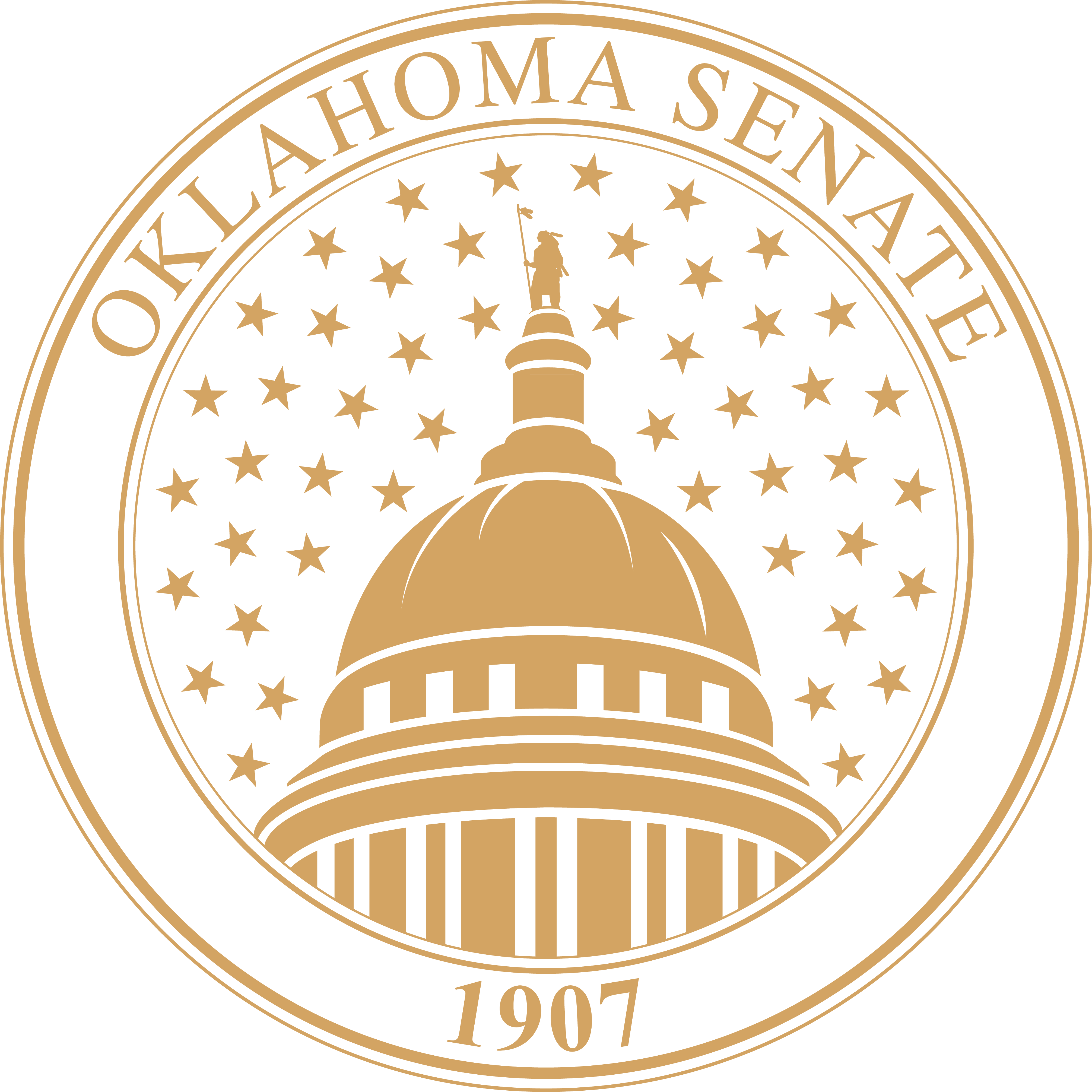Senate interim study on drones underscores complexity of new technology and regulation
 Sen. Frank Simpson listens to OU Law professor Stephen Henderson Wednesday during his drone interim study.
Sen. Frank Simpson listens to OU Law professor Stephen Henderson Wednesday during his drone interim study.
 The Senate Public Safety Committee heard testimony from various agencies, businesses and organizations Wednesday about issues and concerns surrounding the increase in popularity of drones.
The Senate Public Safety Committee heard testimony from various agencies, businesses and organizations Wednesday about issues and concerns surrounding the increase in popularity of drones.
Testimony presented during an interim study on drones gave members of the Senate Public Safety Committee an opportunity to better understand some of the potential positives and the sometimes competing concerns regarding constitutional rights when contemplating possible state policy on the use of drones.
The study was requested by Sen. Frank Simpson who said it was important to take into account privacy concerns, constitutional questions and the need to balance those with public safety issues and the potential for economic development in the state.
“I’ve been studying this issue for months, and I am increasingly aware of the complexities involved. We have laws on the books meant to address privacy concerns, including laws against trespassing, but now we have to think in new terms—aerial trespassing is a phrase we heard used today,” said Simpson, R-Springer. “I think this is a first step toward insuring we take a comprehensive look at the issues and the dynamics involved.”
Stephen Henderson, a law professor at the University of Oklahoma, acknowledged the complexities faced by policy makers. He said while the Federal Aviation Administration (FAA) set policy on air space, privacy concerns were not something that they’ve addressed.
“Do we need privacy laws? Like never before,” Henderson said, but acknowledged privacy rights sometimes conflicted with other constitutional rights, like free speech and press. “This is not easy, and for the most part the law is simply not yet declared. Over the last decade…courts have begun to articulate a constitutional right to record, but so far it’s been limited to the recording of police in the public performance of their duties, which is the easiest case. And it’s not even yet considered that as to recording from the air.”
Henderson presented a range of possible public policy approaches, some giving greater emphasis to privacy concerns versus first amendment concerns. He said the most restrictive legislation, a ban of all non-consensual drone flight, would be the most likely to be struck down.
George Geissler, State Forestry Director of the Oklahoma Department of Agriculture told committee members how drones are being used to support their mission, from determining numbers and species of trees to using drones to help prevent and fight wildfires. One problem has been the use of drones by the media to get pictures of those fires.
“Let’s face it folks, fire is a really cool visual image, so there’s all the rage to go ahead and get pictures of that,” Geissler said. He explained the problem is that the drones can pose a danger to helicopters involved in firefighting efforts.
Chris Merideth with Farmers Insurance talked about the use of drones in helping assess disaster areas. Other speakers included Victor Bird, Director of the Oklahoma Aeronautics Commission, Ryan Kiesel, Executive Director of Oklahoma ACLU, James Grimsley, Vice-president of Unmanned Systems Alliance of Oklahoma and Joe Hartpence of Eagle Vision Drones.
“It is important to address issues that are very real concerns here in Oklahoma such as public safety and privacy, but also taking into account the potential benefits for our state,” Simpson said. “As we look at potential legislation, we need to proceed thoughtfully and carefully.”
 Oklahoma Senate
Oklahoma Senate

